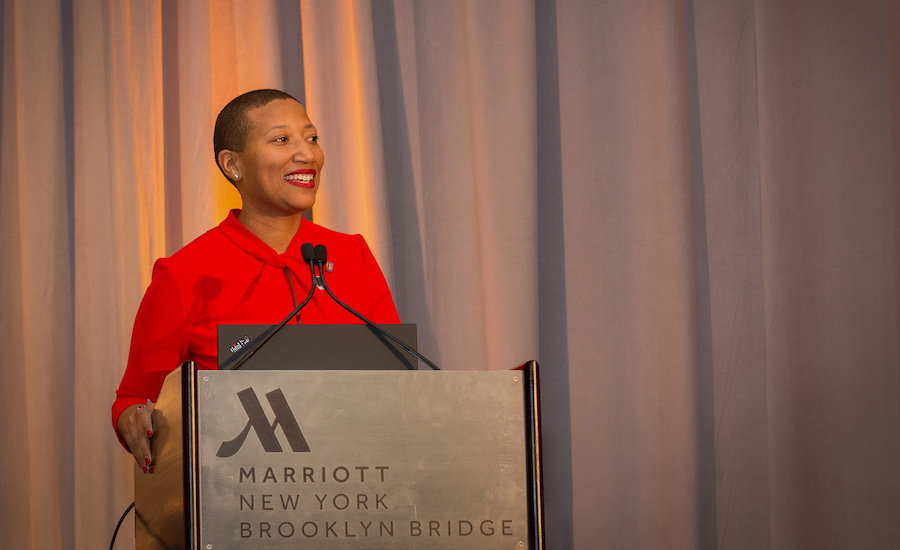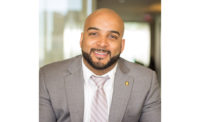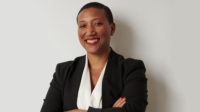Interview with NOMA President Kimberly Dowdell

Kimberly Dowdell speaking at the 2019 National Organization of Minority Architects Conference Awards Dinner
Photo © Neville Simpson Photography
In mid-April, cities and states across the U.S. began to release preliminary data showing that communities of color are being disproportionately stricken by COVID-19. In New York, black and Latino people are dying at twice the rate of white people; in Chicago, African-American patients account for 72 percent of coronavirus-related deaths, while comprising just under a third of the population. Officials have pointed to longstanding inequalities in income, resources, health, and access to health care as likely causes of this disturbing trend.

Chicago-based architect Kimberly Dowdell, director of business development for HOK and the 2019–20 national president of the National Organization of Minority Architects (NOMA), has studied architecture and public policy at Cornell University and Harvard University’s John F. Kennedy School of Government. She spoke with RECORD about how systemic disparities have exacerbated the virus’s effect on minority communities—and how the pandemic’s economic repercussions might impact the next generation of young architects of color.
How can architects help disrupt historically entrenched inequalities that have left many people of color more vulnerable to COVID-19?
It’s less about physical design and more about policy design. It comes down to how resources are allocated, and how people are able to move about in their environments. But structural inequalities have been a characteristic of our nation from the beginning, particularly for African Americans. Just look back at housing policies from the middle of the 20th century, when redlining and restrictive covenants put people who look alike in particular neighborhoods based on their economic standing. It’s tragic to be able to predict someone’s health outcomes or life expectancy by their zip code. If the biased practices of the 1950s and ’60s hadn’t occurred, and people of color were able to live wherever they wanted to live, I think that we’d be seeing fewer tragedies right now.
So we have to start in the halls of government. Last year, Chicago Mayor Lori Lightfoot hired urban planner Maurice Cox, who I worked with for the City of Detroit, as planning commissioner. He and his team are working to invest in the under-resourced south and west parts of the city, which are largely African-American and Latino.
New York governor Andrew Cuomo suggested that the disproportionate representation of black and Hispanic people in frontline jobs has placed those communities at higher risk of infection. So let’s talk about work. One of your NOMA goals has been to encourage people of underrepresented backgrounds to pursue architecture. Does that feel more urgent now?
Governor Cuomo is absolutely correct that a lot of essential workers are people of color, who must choose between exposure to the virus or not getting a paycheck. So, again, it comes down to economics. Part of my “ALL in for NOMA” platform, which stands for Access, Leadership, and Legacy, focuses on providing access to the profession for everyone—particularly those in underserved groups, like the African-American community, which represents just 2 percent of the profession.
Part of that is the new Fellows Program, which will place five recent graduates with firms in five cities for 12-week paid internships. By providing housing and transportation support, we’re trying to break down barriers that often prevent kids of lower-income backgrounds from relocating for a new opportunity. We received over 70 applications and had moved on to the shortlist when the pandemic hit, so things are currently on hold. But I want to communicate to both the firms and the fellows that we are committed to supporting them, despite the present uncertainty.
You graduated just as the Great Recession hit and estimate that half of your classmates are not employed in architecture in the traditional sense. How can the heavy toll of financial downturns on new graduates be mitigated?
We lost nearly a generation of architects in 2008 and 2009, and we don’t want to see that happen again. This is where we look to our local chapters to rally around the emerging professionals who are most vulnerable.
We have to be intentional about investing in young people from under-resourced communities. There’s a higher likelihood that a person of color is from one of those communities—but, of course, that’s not always the situation; don’t assume that, just because someone is a person of color, they don’t have resources. Our job as an organization is to help pool resources from places that can invest in NOMA and redistribute them to those who need support, so that young people have a chance to stay in the profession and take part in shaping their communities.



